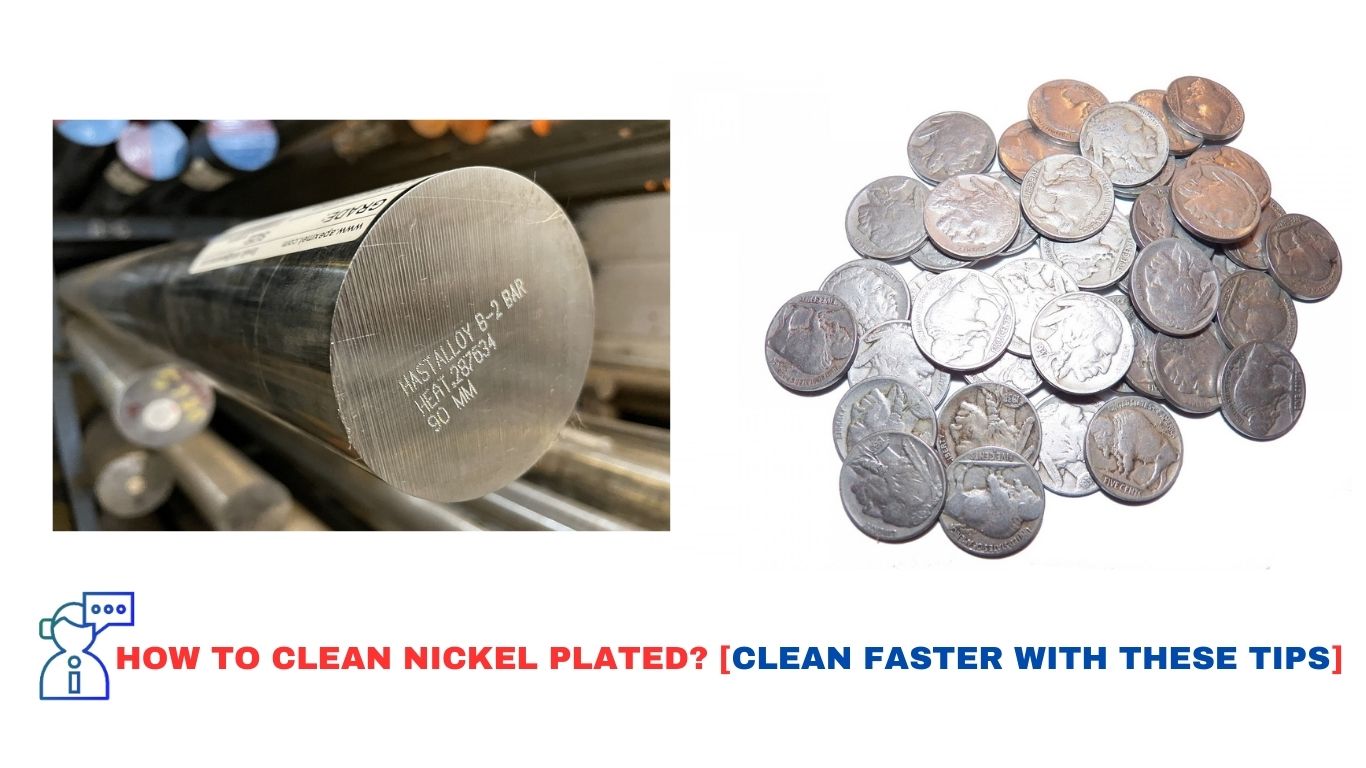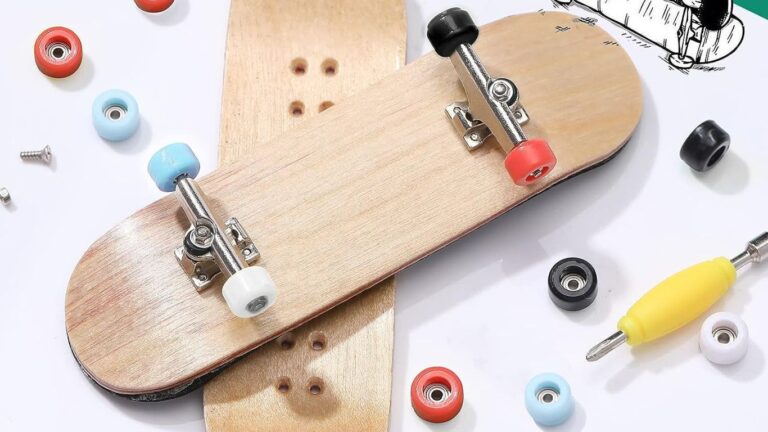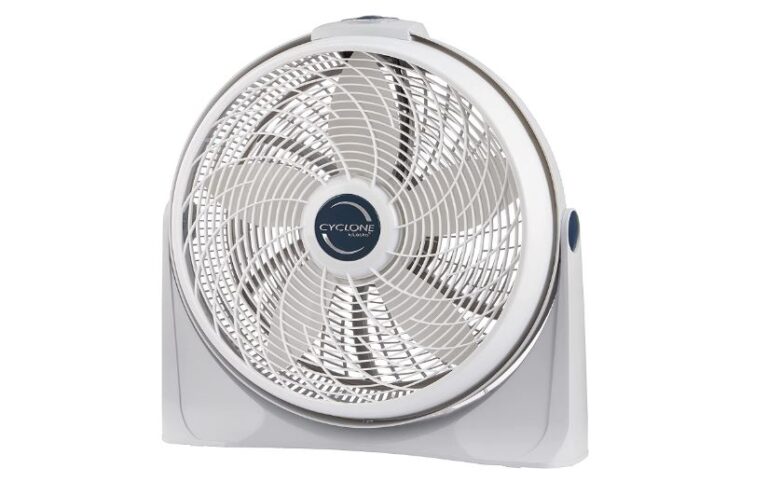How To Clean Nickel Plated? [Clean Faster with These Tips]
The application of Nickel Plated allows for the creation of corrosion-resistant ornamental coatings for metal. It is utilized on a great number of industrial components, but it is also present in a great number of domestic components, such as door hinges, grills, and faucets. When grease stains and tarnish begin to emerge on your plating, you will need to wipe it off as soon as possible. You can maintain the durability and luster of your nickel plating for many years to come by first cleaning it with warm water, then using a metal cleaner on any spots that do not disappear, and then polishing the surface.
What Is Nickel Plated?
The term “nickel plated” is used to describe a surface that has been electroplated with a coating of nickel to give it a metallic appearance. This plating has the potential to deliver a number of benefits, including better durability, resistance to corrosion, and an improved look.
#4 Methods To Clean Nickel Plated
Method 1: Cleaning with Water
- Polish with a Soft Cloth: To begin, use a cloth that is gentle and does not contain abrasives to polish the nickel plating. Scuff marks, oil stains, and fingerprints may be removed using water that is warm and flowing. When polishing, use motions that are tiny and circular.
- Prepare Soapy Water: Mix up some gentle dishwashing liquid and some hot water to make a solution. Avoid using soap that has a rough texture. The solution need to be soapy, but it shouldn’t be very abrasive.
- Wash the Plating: Washing the nickel plating carefully with a soft cloth that has been dipped in soapy water is a good idea. To remove stains from bigger items, use a moist towel to buff the surface. In order to avoid damage, you should avoid using aggressive scrubbers.
- Rinse Off the Soap: To clean the object that has been plated, run it under warm running water or wipe it down with a moist towel. To avoid the accumulation of residue, be sure to give everything a good rinse.
- Dry Thoroughly: When drying the plating fully, use a towel that is both clean and soft. This will prevent any water from seeping into the nickel.
Method 2: Using Bottled Cleaners
- Apply Metal Polish: To clean the nickel plating without scratching it, use a metal polish that does not include abrasives, such as chrome polish. Use very little of the product and rub it in using circular motions.
- Use Metal Cleaner: Directly on the discolored areas, apply a metal cleaner that does not include abrasives, such as chrome cleaning. Give it a moment to settle down.
- Scrub with Cleaner: After applying the cleaning, buff the plating using a cloth, steel wool, or a gentle scouring pad to remove any residue. To prevent scratches, move the object in a moderate circular motion.
Method 3: Cleaning with Vinegar
- Prepare Vinegar Cloth: Vinegar is an effective mild acid that may be used to remove stains if you soak a clean, soft cloth in it. Remove any extra vinegar by squeezing it.
- Scrub the Plating: Use the cloth that has been soaked in vinegar to gently buff the spots away using circular movements. Soak the cloth in the liquid again as necessary.
- Create Vinegar-Water Solution: Vinegar and water, at a ratio of four parts water to one part vinegar, can be used to remove tough stains. Vinegar in its purest form should be avoided since it can erode delicate nickel plating.
- Soak in Solution: Either submerge the item that has a nickel plating in the solution or pour it over the item. After some time has passed, continue as many times as is required.
- Rinse Thoroughly: To eliminate any trace of vinegar from the plating, rinse it under running warm water or wipe it down with a moist towel.
Method 4: Applying Ammonia
- Prepare Ammonia Pad: To clean a surface, soak a scouring pad or cloth in a diluted solution of household ammonia.
- Scrub the Plating: Scrub the item carefully with the pad that has been saturated in ammonia. Boost the strength of the stain on the deep spots.
- Create Ammonia-Water Solution: In order to create a more powerful cleaning solution, combine one component ammonia with three parts water. It is best to avoid completely soaking the plating in ammonia.
- Soak in Solution: Put the thing you want to clean into the solution, or pour the solution over the object. Allow it to sit for up to a quarter of an hour.
- Rinse Thoroughly: Remove the ammonia by washing it away with warm running water or a cloth that has been well cleaned and dampened. Make certain that all of the ammonia is gone.
Steps To Clean Nickel Plated
Objects with a nickel Plated are simple to clean. It is recommended that you clean things with a nickel plating by following these procedures in order:
Step 1. Remove dust carefully using a sponge or a cloth made of a gentle material.
Step 2. Use a solution of mild soap and water to remove grime or debris from surfaces.
Step 3. When cleaning difficult stains, use a brush with gentle bristles.
Step 4. Remove any traces of the soap and water solution by scrubbing the area with a gentle cloth or sponge and fresh water.
Step 5. Applying a metal polish with a soft cloth or sponge and rubbing softly in a circular motion is the best way to remove oxidation and tarnish from metal.
Step 6. Remove the polish by rinsing it off with clean water while using a gentle towel.
Step 7. Use a gentle towel or cloth to dry the object that has a nickel plating.
Step 8. Using a gentle cotton towel, rub the surface until it is shiny.
Step 9. To keep the nickel plating on the item from tarnishing, store it in a dry and cold environment.
Nickel Reacts With Vinegar
Acetic acid, which is found in vinegar, may be used to brighten nickel and eliminate oxidation spots. Vinegar, on the other hand, is insufficient to dissolve tartar or mineral deposits; hence, one must resort to additional approaches in order to eradicate this accumulation.
In order to effectively clean nickel with vinegar, you must first ensure that the surface is well rinsed, and then continue with the steps below:
1. Remove any dirt or debris from the surface by wiping it down with a cloth that has been dampened.
2. Soak a sponge in a solution consisting of one part vinegar and four parts water, and then rinse the sponge well.
3. To clean the surface of the nickel, use the moist sponge to wash it off. The sponge should be wrung out periodically, and if necessary, it should be re-dipped in the mixture.
4. You also have the option of using a nylon scouring pad to clean the area, if necessary.
5. To finish, give the nickel a last rinsing in clean water and then polish it with a light, dry cloth.
It is expected that this approach will help brighten the metal and eliminate oxidation spots. If the stains and deposits are really stubborn, you might need to resort to more rigorous cleaning procedures, such as buffing the nickel using a metal polishing agent.
Vinegar Can Clean Nickel
Vinegar is an effective cleaning agent for nickel. Since vinegar is an acid, it may be used to effectively remove most metals, including nickel, according to its pH level. In order to use vinegar to clean nickel, you must first create a solution consisting of one part vinegar and two parts water.
Rub the nickel with a soft cloth that has been dipped in the solution and used in this manner. Remove any dirt or debris from the nickel by rinsing it with clear water and patting it dry with a clean, soft cloth. If the stains on the nickel are still difficult to remove, you may either try the technique again with full-strength vinegar or try using a paste made of baking soda and vinegar on a soft cloth.
After you are finished, make sure that the nickel has been fully rinsed with plain water and dried entirely.
Nickel Plating Tarnish: How To Remove?
Tarnish may be removed from nickel plating by wiping the surface of the plating with a cloth that has been moistened with either a commercial metal cleaner, a commercial jewelry cleaner, or a solution that is made by dissolving two teaspoons of baking soda into one quart of warm water. Tarnish can also be removed off the surface of the nickel plating by using a professional jewelry cleaner.
Focus your attention on any spots on the surface that appear duller or darker in comparison to the remainder of the plating. When you are finished, clean the plating by rinsing it with warm water and patting it dry with a towel. Steel wool can be used to provide places that are difficult to remove a little scrubbing.
Be cautious not to brush too vigorously, since this might cause the plating to become scratched. To remove severe tarnish, you might try using a lacquer remover that is available for purchase. Always be sure to utilize the product in accordance with the directions provided by the manufacturer, and always wear protective gear when it’s required.
Is Vinegar Safe To Use Straight?
Absolutely, you may use vinegar in its undiluted form to clean a wide variety of surfaces and objects. Vinegar is an effective natural cleaner that can eliminate many different types of bacteria and germs due to its antibacterial and bactericidal capabilities. It functions at its peak efficiency when applied to non-porous surfaces like those found in toilets, sinks, and counters.
To clean with vinegar, fill a spray bottle with equal parts water and white vinegar, shake the container well, and then spray the solution onto the surface you want to clean. After allowing the solution to sit for at least ten minutes, wipe the area clean with a moist cloth or sponge.
Vinegar is an alternative for cleaning your house that is not only inexpensive but also completely natural. It helps to prevent the formation of soap scum on hard surfaces, which may be difficult to remove. In addition, it may be utilized for the cleaning of stainless steel fittings and fixtures, as well as glass surfaces and windows.
Vinegar is perfectly safe to use on textiles and may be used to spot clean a variety of surfaces, including upholstered furniture and carpets.
Cleaning Nickels Without Damaging Them
Because nickel is a rather delicate metal, it is essential to use extreme caution whenever cleaning it. Using a gentle cloth and some warm, soapy water is the best way to clean a nickel without scratching or marring it. After dipping the towel in water, place a minuscule amount of mild liquid soap of any kind on it.
To clean the nickel, use this moist cloth and give it a little rubbing in circular motions. The nickel should then be dried using a soft, clean cloth after being wiped down with a moist cloth or a cloth that has been soaked in clean water. It is not recommended that you clean with hard abrasive cleaners, steel wool, or other metals.
It is possible to use a buffing cloth in order to eliminate oxidation stains and tarnish from whatever surface you are working on. If using a moist cloth is not successful in removing the oxidation markings, using a piece of extremely fine sandpaper and then wiping it with a little damp cloth may be able to assist erase the marks without causing any damage to the nickel.
Nickel Cleaning And Polishing
When cleaning and polishing nickel, it is important to be careful and delicate so as not to damage the metal or cause it to become dull. To get started, grab a gentle rag, some warm water, and a gentle dish detergent. After applying the soapy cloth to the nickel and rubbing it in a circular motion, the nickel should be clean.
Proceed until the entire surface has been cleansed, and then rinsing with water that is both clean and warm is the final step. If the surface has been scratched, you can try to buff the scratched area out using steel wool; however, in order to avoid inflicting any more damage, be careful to apply very mild pressure and to go with the grain of the metal as you work.
After you have cleaned the nickel, you may polish it with a commercial product such as Brasso that is made to be used on nickel as well as other metals. Polish should be applied to a soft cloth, and then the surface should be softly rubbed in a circular manner until it shines.
After allowing the polish to dry, remove any excess with a towel that is both clean and dry.
When carried out in the proper manner, cleaning and polishing nickel is a procedure that is not overly difficult. When buffing, be sure to use soft cleansers and just a minimal amount of pressure; this will allow you to get the desired outcome of a surface that is shining and free of scratches.
Can Vinegar Damage Polished Nickel?
Vinegar does not tarnish polished nickel, contrary to popular belief. Vinegar is an effective cleaning solution for polished nickel since it is a mild acid that can be used to dissolve buildup that has occurred on the surface of the metal. In actuality, using vinegar to clean polished nickel is a good idea.
Before applying vinegar to a surface, one should always make sure that the vinegar has been diluted with water or another cleaning solution, since undiluted vinegar can cause etching or corrosion. When cleaning the nickel, it is recommended to make use of a cloth that is not abrasive.
After cleaning, you may want to add an additional layer of protection against future damage by adding a layer of auto wax or another type of protective coating.
Coin Cleaning By Professionals
The cleaning of coins may be done in a variety of different methods by specialists. Dry cleaning is the most frequent procedure, and it entails using specialized equipment and chemicals to gently remove dirt, grease, and corrosion from the surface of a coin.
A cotton swab, a brush with soft bristles, or sandpaper with a fine grit can be used to gently loosen and remove any filth that may be present. If there are still patches of filth that won’t come off, you can use coin cleaning solution to dissolve the impurities.
Because this might cause harm to historic coins and degrade the patina that naturally forms over time, coins should not be submerged in water for an extended period of time. Ultrasonic cleaners are yet another procedure that is utilized by experts for the purpose of thoroughly cleaning coins.
In this method, a cleaning solution is combined with high-frequency sound waves to generate microscopic bubbles that loosen and remove dirt and debris from the surface. Coins that have had their surfaces stabilized or coated in order to protect them can safely go through the ultrasonic cleaning process.
The coins are placed in a revolving drum that is loaded with a specific cleaning solution during the tumble process, which is another method utilized by certain specialists. Due to the fact that the tumbling process might remove the protective layer from the coin’s surface, this procedure is not suggested for use with coins that have any kind of surface coating.
Can I Use Windex On Nickel?
There is no need to worry about using Windex on any kind of nickel plated metal because it is not suggested. Ammonia, which is included in Windex, is known to accelerate the corrosion process in metals like nickel. It is recommended that you use a cleaner that is formulated particularly for nickel or silver plating if you wish to clean things that have been nickel-plated.
Before applying the cleaner to the entire object, you need to make sure that you test it on a piece of the metal or a tiny inconspicuous section of the metal first. If you are cleaning a little area that cannot be polished, all you need is some gentle soap and water, and that should be enough to get the job done.
Stay away from any strong abrasives or chemical cleansers that might potentially scratch the metal’s surface. You can use a metal polish designed for nickel plated products to remove grime and tarnish that is more stubborn.
Brushed Nickel Finish: How To Restore?
To bring back the brushed nickel finish on your appliance, you will need to clean it thoroughly. To begin, remove any dirt and grime from the surface by wiping it down with a moist cloth that has been treated with a gentle dish soap. After that step is finished, use a solution of ammonia and water that has a ratio of one part ammonia to four parts water to remove any filth and buildup that is still present.
After removing it with a moist towel, dry it well using another cloth that is both soft and lint-free.
After the surface has been thoroughly cleaned, you will need to use a metal polish to bring back the brushed nickel finish by working it into the surface. Polish the metal by rubbing it with a soft cloth and moving in a circular motion until the metal shines.
It is possible that carrying out the procedure more than once may be required in order to achieve the desired outcome. After you have completed your work, wipe the metal surface off with a moist towel, and then dry it with a clean, lint-free cloth.
Last but not least, you may give the metal a protective coating so that it will preserve its glossy appearance for a longer period of time. Protecting the metal from fingerprints and other types of debris may be accomplished with the aid of clear wax or furniture polish. Applying wax or furniture polish with a soft cloth and then buffing it to a sheen is all that is required.
Is Vinegar Nickel Safe?
Yes, vinegar is often seen as safe to consume when it comes to nickel. Because vinegar is an acid, it has the ability to dissolve nickel when used in quantities ranging from 5 to 8 percent. Because of this, vinegar is an excellent choice for cleaning nickel jewelry without running the risk of corroding the metal.
It is even put to use by certain individuals in the process of giving a piece of jewelry a nickel finish. Vinegar, on the other hand, might cause nickel plating to breakdown, which will result in the discoloration of the jewelry. This is something you should keep in mind if the piece was manufactured with plated or even sterling silver.
Before you use vinegar to clean your jewelry, it is essential to be certain that it is composed entirely of nickel and does not have any coating of any kind.
What Causes Nickel To Tarnish?
The interaction of sulfur in the air with nickel in the environment leads to the tarnish that is characteristic of nickel. When sulfur comes into contact with nickel, it causes a thin coating of nickel sulfide to develop on the surface of the metal. This results in the color of the metal becoming more dull or tarnished.
This response is exacerbated when air and moisture are present, and it occurs most frequently in regions that have a high relative humidity or that are located near the shore. The tarnishing may also be caused by other pollutants in the air, such as hydrogen sulfide, which may contribute as well.
Nickel should be stored in a location that is cold, dry, and dark. It should also be protected from direct contact with air and other elements that are corrosive.
Frequently Asked Questions -How To Clean Nickel Plated
Q: How do I clean nickel plated brass?
A: To begin the process of cleaning nickel plated brass, wipe the surface with a soft cloth in a circular motion to remove any dust or dirt. After that, combine some gentle soap with some warm water, wet a gentle cloth, and then wipe the surface down. Avoid using abrasive cleansers since they have the potential to scratch the nickel plating. After cleaning, make sure the item is completely dry.
Q: How can I polish nickel plated items?
A: Use a metal polish that is non-abrasive and particularly developed for nickel surfaces if you want to polish goods that are nickel plated . After applying a tiny quantity of polish to a soft cloth, buff the object in a circular motion while being careful not to scratch it. After removing any residue with a moist, clean cloth, make sure the item is completely dry before using it again.
Q: How do I clean nickel plated metal?
A: The filth and grime on nickel plated metal may be removed by wiping it down with a solution made of a gentle soap and warm water. Avoid using any harsh chemicals or anything that are abrasive, since they might harm the plating.
Q: What metals can be nickel plated?
A: Nickel plating may be applied to many different metals, such as steel, brass, copper alloys, and zinc alloys among others. Electroplating a coating of nickel onto the surface of the metal is one step in the process.
Q: What is nickel plated brass?
A: The term “nickel plated brass” is used to describe brass components that have been electroplated with a coating of nickel to add a decorative finish. This coating improves the look of the brass while also increasing its longevity and resistance to corrosion.
Q: How should I care for a nickel plated gun?
A: To maintain the appearance of a pistol that is nickel plated, wipe it off with a dry, clean cloth on a regular basis to eliminate fingerprints, grime, and moisture. Avoid using any items that are too abrasive since they could scratch the plating. To avoid the accumulation of moisture, the weapon should be kept in a cold and dry location.







